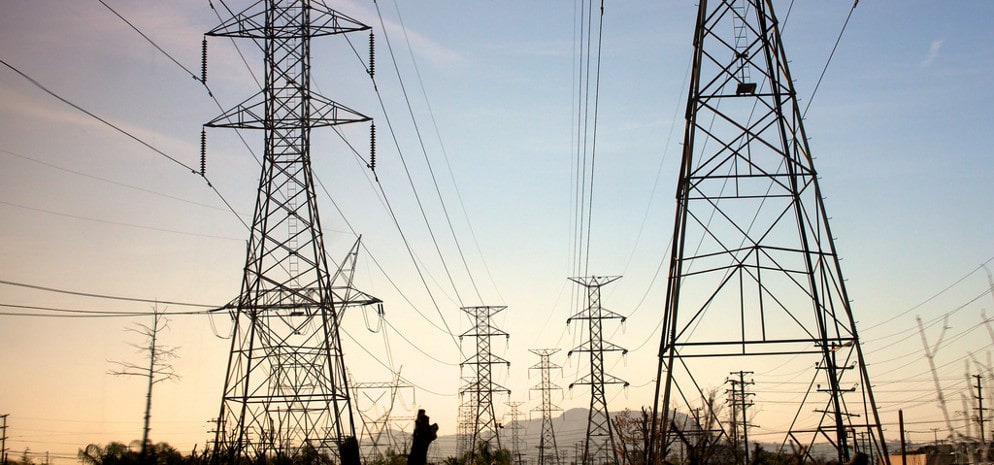About 80% of interconnection study tasks could be automated, allowing transmission providers to focus on “the harder problems where their judgment and experience are really necessary,” said David Bromberg, co-founder and CEO of software firm Pearl Street Technologies, at the Transmission and Interconnection Summit held outside Washington, DC.
Pearl Street has built software for transmission providers that accelerates interconnection studies, and similar software for renewable energy developers “to better manage risk and uncertainty in interconnection and clear more of their projects,” Bromberg said.
Pearl Street’s software has modeled more than 1,000 generation and storage projects, including 180 GW of renewables projects, the company’s website says.
Andrew Martin, head of transmission for software firm Nira Energy, said transmission providers and utilities “should have a goal of communicating” an interconnection study process that is reproducible. Once there’s a reproducible process—for example, once an engineer can replicate the study results—“then the market can continue to build upon that reproducibility” by developing software, he said.
“These study processes that we all do are very deterministic,” Martin added. “There is a right and a wrong way to do them, and that’s something that software is super helpful with.” On a related note, he said “we should strive to get to a place where transmission planning engineers are not needing to do repetitive tasks.”
Martin said that grid operators MISO, PJM and SPP have interconnection study processes that are reproducible, and that for those three markets, Nira Energy offers software for project developers.
Once developers get their phase one study results, Martin said, “they’re determining whether or not they want to stay in the queue,” based on what they think their results will be at phase three and the generator interconnection agreement phase. “For them to be able to do that, they need to first be able to replicate the phase one results, so they can take a step forward and do more complicated things on top of that, while being able to trust what they’re doing.”
Bromberg said his work was initially inspired by the electronic design automation industry that simulates and designs electronic chips. He said that a chip can be “an extremely complex electronic system with billions of components, and there are software tools that help automate the design and analysis and optimization of those chips, and those tools are very, very powerful.” In comparison, he said, “the power grid is geographically very large, but network-wise, it’s orders of magnitude smaller, and switching at lower frequencies.”
Anupam Gopal, president and CEO of the consultancy Enerzinx, said his firm performs power system modeling for project developers and utilities in the U.S. and three other countries. In a discussion on the engineering workforce, he said that “in other parts of the world, they offload” interconnection studies to project developers, “so that way it is not centralized to one organization. It’s spread around all the developers” and the transmission provider “basically only approves or disapproves.”
Caitlin Marquis, managing director with the trade group Advanced Energy United, whose members develop large-scale generating projects, said that both the group’s members and transmission providers rely on consulting firms. She said the group surveyed transmission providers and found that using third-party consultants is a “benefit” and “improves the throughput of studies” but can cause “challenges with coordination” due to “reliance on multiple different external parties that might have different engineering judgment or different conclusions.”
Demand for engineers
Shankar Chandramowli, director for energy power markets at the consultancy ICF and the panel’s moderator, cited a study finding that one of three engineering jobs goes unfilled in the U.S., and added that many grid operators, known as ISOs and RTOs, “don’t have power system engineers to run the models themselves.”
Noting the 2600 gigawatts of active queue capacity in the U.S., Chandramowli called for reconciling the “competing objectives” of speed and accuracy in interconnection studies, by automating the study process and having a skilled power systems engineering workforce to use and advance the process.
Radha Soorya, vice president for interconnections and grid analysis for Invenergy, said that “as the developer on the panel, I can surely address this, because I took two years to fill an engineer position.” She said Invenergy has committed to train and develop 2500 individuals “so they can enroll, train and develop a career in the energy industry.”
High school and undergraduate students are familiar with career opportunities in robotics, AI and medicine, Soorya said, but not in energy or electrical engineering. Invenergy plans to share a curriculum with students and teachers “about the foundation of electrical engineering, so that it can be a skill set they can bring when they graduate,” and that Invenergy will also provide career counseling and internships during college.
The conference session was titled “Innovative solutions to increase the pace of interconnection studies and system planning while reducing labor intensity.” The conference was produced by Infocast and supported by 15 sponsors.
This content is protected by copyright and may not be reused. If you want to cooperate with us and would like to reuse some of our content, please contact: editors@pv-magazine.com.








By submitting this form you agree to pv magazine using your data for the purposes of publishing your comment.
Your personal data will only be disclosed or otherwise transmitted to third parties for the purposes of spam filtering or if this is necessary for technical maintenance of the website. Any other transfer to third parties will not take place unless this is justified on the basis of applicable data protection regulations or if pv magazine is legally obliged to do so.
You may revoke this consent at any time with effect for the future, in which case your personal data will be deleted immediately. Otherwise, your data will be deleted if pv magazine has processed your request or the purpose of data storage is fulfilled.
Further information on data privacy can be found in our Data Protection Policy.